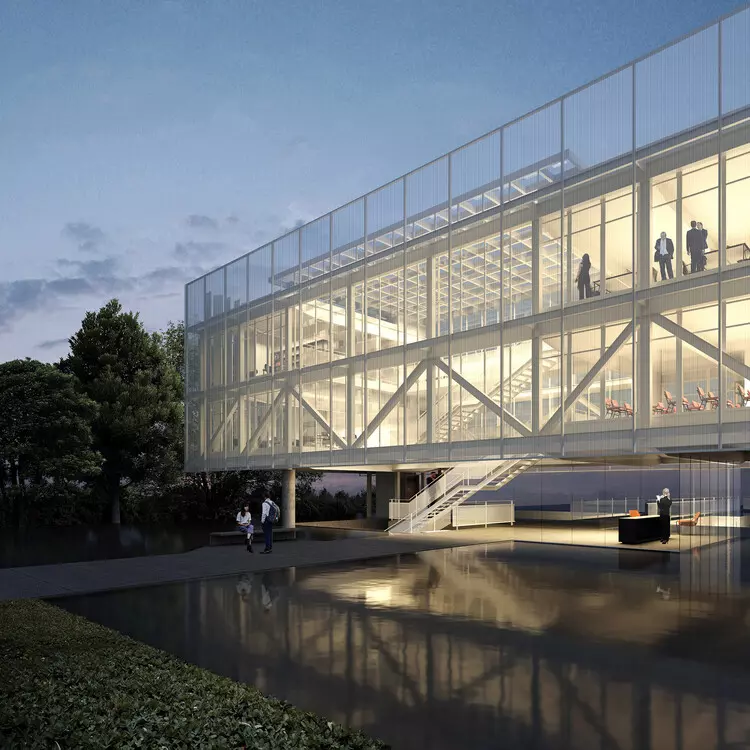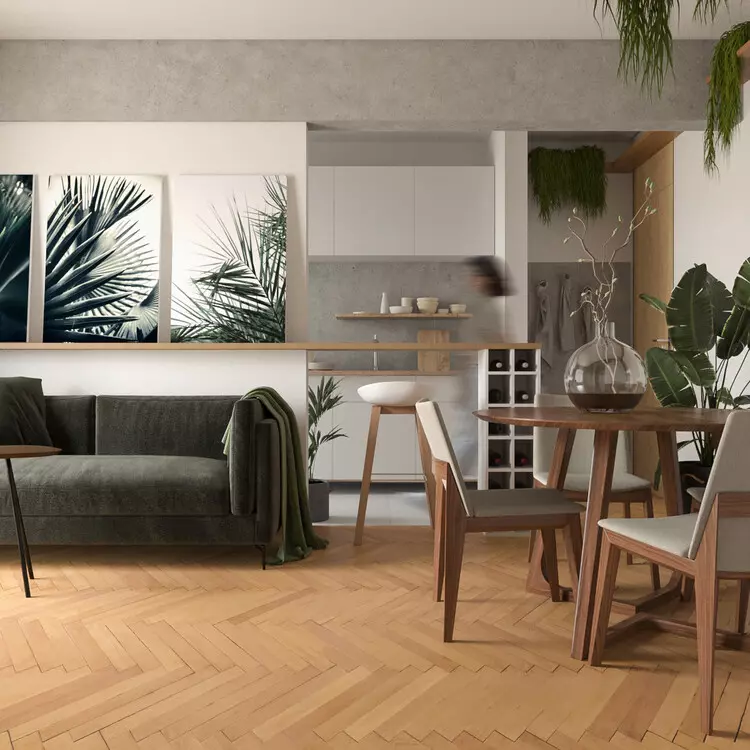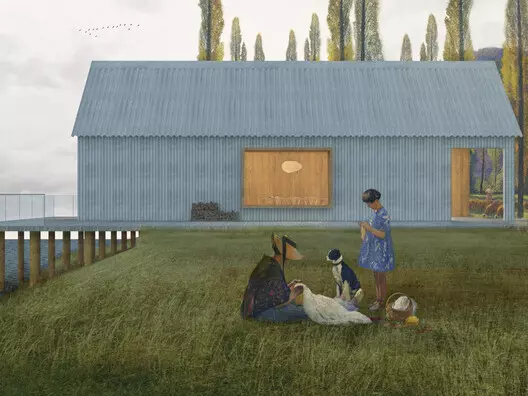 Render: AEAS New Headquarters. Image Courtesy of Estúdio Módulo
Render: AEAS New Headquarters. Image Courtesy of Estúdio Módulo
Rendering has become an essential tool for architectural offices, aiding in the design process and showcasing projects in their best light. To delve deeper into the world of rendering and uncover the secrets behind creating outstanding visualizations, we spoke to Guilherme Bravin and Marcus Vinicius Damon, co-founders of Estúdio Módulo and coordinators of {CURA}, an open architecture school focused on architectural visualization.
Unlocking the Secrets to Impressive Renders
When it comes to transforming an average render into something truly impressive, Bravin and Damon emphasize the following aspects:
Style and Language
 Render: Ágora Tech Park. Image Courtesy of Estúdio Módulo
Render: Ágora Tech Park. Image Courtesy of Estúdio Módulo
Beyond the technical aspects, they emphasize that an impressive image should aim to create an atmosphere and convey a sense of impact and well-being to the viewer. Whether it's a collage or a rendered visualization, the style and visual language should align with the overall graphics of the presentation.
Atmosphere
 Render by Nicholas Holanda. Image Courtesy of CURA
Render by Nicholas Holanda. Image Courtesy of CURA
Creating the right atmosphere is crucial to evoke the desired emotions associated with the project. Factors such as lighting, both natural and artificial, the camera's position, materials, and human figures all contribute to crafting the perfect atmosphere.
Light and Shadow
 Render: Ágora Tech Park. Image Courtesy of Estúdio Módulo
Render: Ágora Tech Park. Image Courtesy of Estúdio Módulo
Lighting plays a vital role in setting the mood and interpreting the project's essence. Adjusting the sun's position meticulously can drastically alter how light interacts with the environment, emphasizing the importance of getting it right. Furthermore, paying attention to lighting details for night scenes is crucial for creating a harmonious composition.
Camera View
 Render: Communal Housing in Moscow. Image Courtesy of Estúdio Módulo
Render: Communal Housing in Moscow. Image Courtesy of Estúdio Módulo
The way an image captures the depth of space and showcases important architectural elements is significant. Applying the basics of photography, such as framing and composition, can enhance the narrative of the project.
Materials and Textures
 Render by Marcele Eller. Image Courtesy of CURA
Render by Marcele Eller. Image Courtesy of CURA
Accurately representing materials and textures is essential for effective visualization. Attention to detail is crucial, ensuring that the basic characteristics of materials are well-documented in the renders, bringing the project to life.
Objects and Vegetation
 Render by Alana Pacheco. Image Courtesy of CURA
Render by Alana Pacheco. Image Courtesy of CURA
Using high-quality libraries for objects and paying attention to details can elevate the overall quality of the render. Upholstery should convey softness, and vegetation should be accurately scaled to maintain the balance between architecture and landscape.
Human Figures / Cutout People
 Render: Hope Dental Center. Image Courtesy of Estúdio Módulo
Render: Hope Dental Center. Image Courtesy of Estúdio Módulo
Choosing the right scale figures or people is fundamental in creating a realistic depiction. However, it's important to strike a balance between accuracy and avoiding a cheesy or artificial feel. Utilizing quality cutout people or vector figures can be effective solutions.
The Impact of Rendering on the Design Process
 Render: Competition for Urban Furniture in São Paulo. Image Courtesy of Estúdio Módulo
Render: Competition for Urban Furniture in São Paulo. Image Courtesy of Estúdio Módulo
Contrary to popular belief, rendering is not just about producing final presentation images but also plays a significant role in the design process itself. Bravin and Damon highlight how incorporating 3D modeling and rendering throughout the project's development stage helps in making informed decisions regarding layout, openings, materials, and colors.
The Evolution of Renders and the Future of Rendering Techniques
 Render: Houses in Rio da Barra. Image Courtesy of Estúdio Módulo
Render: Houses in Rio da Barra. Image Courtesy of Estúdio Módulo
Reflecting on the progress of rendering techniques, Bravin and Damon acknowledge the significant advancements made in rendering quality over the years. Their contribution to teaching and online courses has played a part in driving this progress. They also express optimism about the future, foreseeing newer techniques such as animations and virtual reality playing a crucial role in project development, allowing architects to integrate visualization elements into the early stages of their designs.
In conclusion, mastering the art of architectural visualization requires attention to detail, a keen eye for design, and an understanding of the emotional impact of an image. By considering style, atmosphere, lighting, composition, materials, objects, and human elements, architects can create captivating and impressive renders that showcase their vision effectively.
This article is part of the ArchDaily Topic: Rendering, proudly presented by Enscape, the most intuitive real-time rendering and virtual reality plugin for Revit, SketchUp, Rhino, Archicad, and Vectorworks. Enscape plugs directly into your modeling software, giving you an integrated visualization and design workflow. Learn more about our monthly topics. As always, at ArchDaily we welcome the contributions of our readers; if you want to submit an article or project, contact us.

















